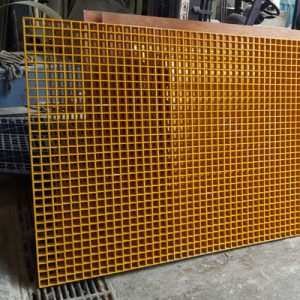FRP Grating, or Fiberglass Reinforced Plastic Grating, is a game-changer in the world of construction and industrial applications. In this article, we’ll delve deep into the world of FRP Grating, exploring its various aspects, benefits, and applications. So, let’s step into the fascinating realm of FRP Grating and unveil its true potential.
What is FRP Grating?
FRP Grating is a lightweight, durable, and corrosion-resistant alternative to traditional metal and wooden grating. Composed of reinforced fiberglass and resin, it offers unmatched strength while being incredibly lightweight.
The Advantages of FRP Grating
FRP Grating offers a plethora of advantages that make it a preferred choice in various industries:
Corrosion Resistance: Unlike metal grating, FRP Grating doesn’t corrode, making it ideal for harsh environments.
High Strength: Despite its lightweight nature, FRP Grating boasts impressive strength and load-bearing capacity.
Low Maintenance: Minimal maintenance requirements save both time and money.
Safety: Its anti-slip surface enhances safety, reducing the risk of accidents.
Versatility: FRP Grating finds applications in diverse industries, from oil and gas to marine and construction.
Applications of FRP Grating
FRP Grating’s versatility allows it to be used in a wide range of applications:
Industrial Flooring: It’s an excellent choice for walkways, platforms, and flooring in industrial settings.
Chemical Processing: Its resistance to chemicals makes it invaluable in chemical plants.
Marine Environments: FRP Grating is commonly used on docks and ship decks due to its corrosion resistance.
Oil and Gas: It’s a go-to option for offshore drilling platforms.
Commercial Construction: From staircases to pedestrian bridges, FRP Grating is a popular choice.
FRP Grating vs. Traditional Materials
Let’s compare FRP Grating with traditional materials like metal and wood:
FRP Grating Installation
Installing FRP Grating is a straightforward process that can be completed efficiently with the right tools and guidance. Here are the basic steps:
Prepare the Surface: Ensure the installation area is clean, level, and free from any debris.
Lay the Grating: Position the FRP Grating sheets according to your layout plan.
Secure the Grating: Use fasteners or adhesives to secure the grating in place.
Trim and Finish: Trim any excess grating and finish the edges for a clean look.
FRP Grating FAQs
Q: How does FRP Grating resist corrosion?
A: FRP Grating’s composition makes it naturally resistant to corrosion, even in harsh environments.
Q: Can FRP Grating be customized in terms of color and design?
A: Yes, FRP Grating can be customized to match specific color and design requirements.
Q: Is FRP Grating eco-friendly?
A: Yes, it’s eco-friendly as it’s made from recyclable materials and requires less maintenance.
Q: What is the lifespan of FRP Grating?
A: With proper maintenance, FRP Grating can last for several decades.
Q: Can FRP Grating be used in extreme temperature conditions?
A: Absolutely, it performs well in both high and low-temperature environments.
Q: How does FRP Grating compare to steel grating in terms of weight?
A: FRP Grating is significantly lighter than steel grating, making it easier to handle and install.
Conclusion
FRP Grating is a remarkable innovation that has transformed industries with its outstanding features and applications. Its resistance to corrosion, high strength, and low maintenance requirements make it a top choice for various projects. So, whether you’re in the construction, industrial, or marine sector, consider FRP Grating as a reliable solution for your needs.














